Epigaea repens, trailing arbutus, is a low spreading native shrub. It has evergreen leaves and blooms in early spring in NJ. It is also known as mayflower.
Flowers
Inflorescence & Flowers
The trailing arbutus flower clusters form from branch axils or are terminal.
The corolla (petals) is tubular opening up to 5 spreading lobes. The corollas are white to pinkish and about half inch long. The flower has 5 sepals. The bud scales that are reddish and hairy. The flower has 10 stamens and a pistil that has a stigma with 5 lobes (from 5 carpels). When you look into the throat of the flower it is all fuzzy with white hairs from the petals and the ovary.
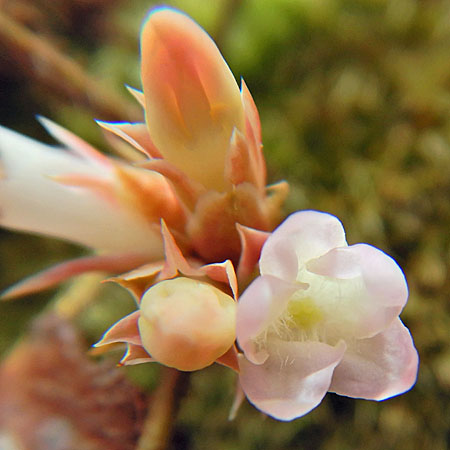

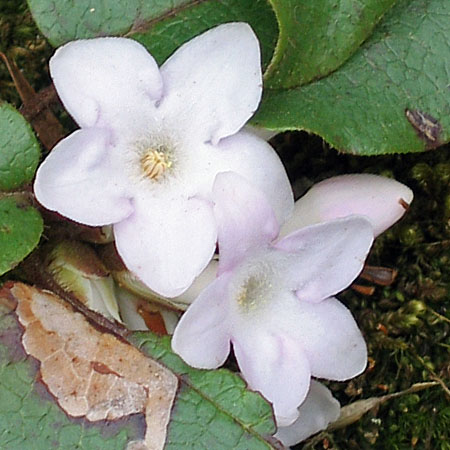
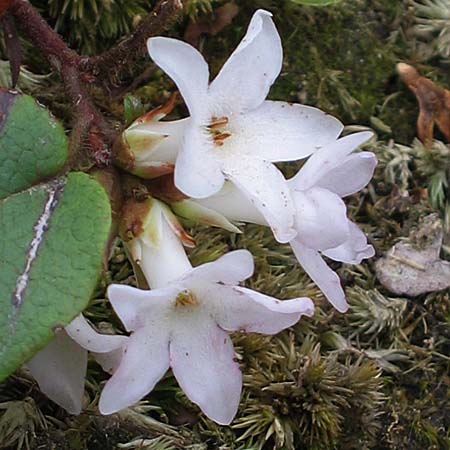
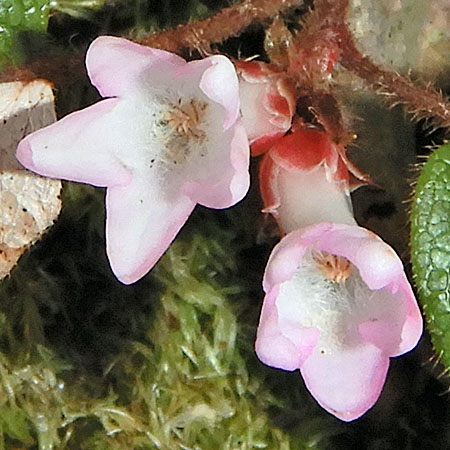
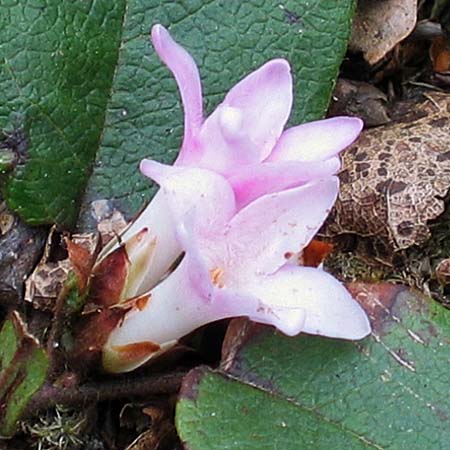
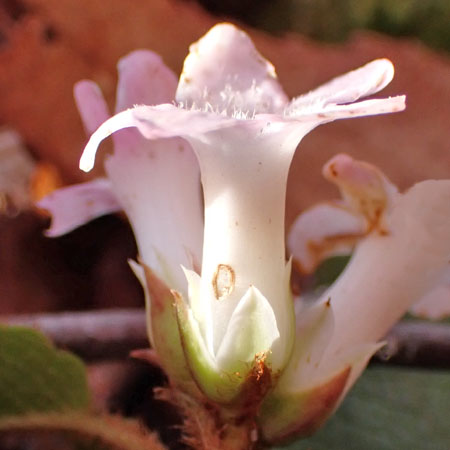
Reproductive system
The flowers are dioecious - that is either staminate (male) or pistillate (female). The flowers have been described as functionally dioecious, because sometimes the flowers appear to be perfect (bisexual) but functionally they are not.
The pistillate flowers have a divided, star shaped 5 part stigma. The stamens may be missing, severely malformed or present but nonfunctioning.
The staminate flowers have an undeveloped stigma with 5 faint lobes that never spread. The stamens produce copious amounts of pollen.
Some morphologically bisexual flowers were functionally staminate.
Pistillate (Female) flower
In a pistillate flower the stigma is well developed with the 5 lobes spread out. Shown are a side view and a frontal view of the 5 lobes of the stigma.
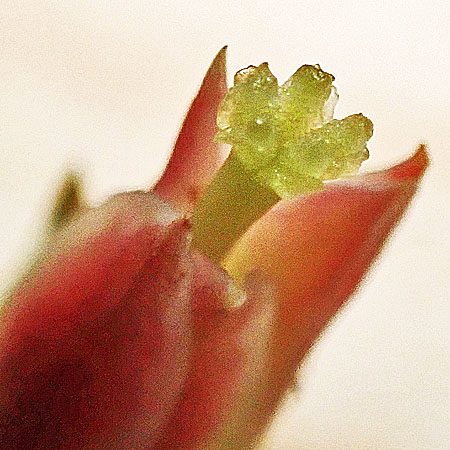

The photo below is an opened corolla tube of a pistillate flower. In this particular pistillate flower the stamens are obviously not fully developed and consequently non-functional. The stamens have no anthers! The level of development of the non-functioning stamen varies as mentioned above. The photo on the right below show a microscope view of the top of the mal-formed stamen - lacking an anther. The hairs on the corolla tube are easily seen.

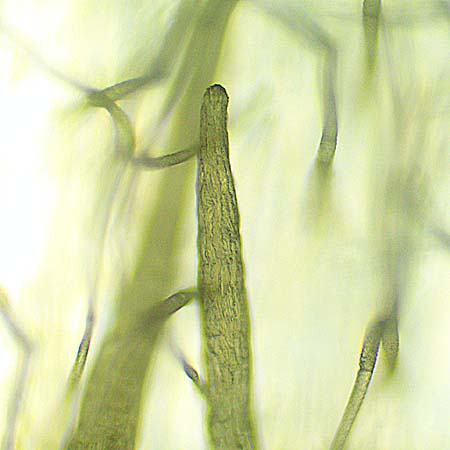
Below is a more mature pistillate flower where the corolla has fallen off leaving the sepals and the pistil. The 5 lobed stigma has matured and is drying up.

Below is a dissected ovary showing some ovules which if fertilized will ripen into seeds. Also seen are the hairs of the ovary.
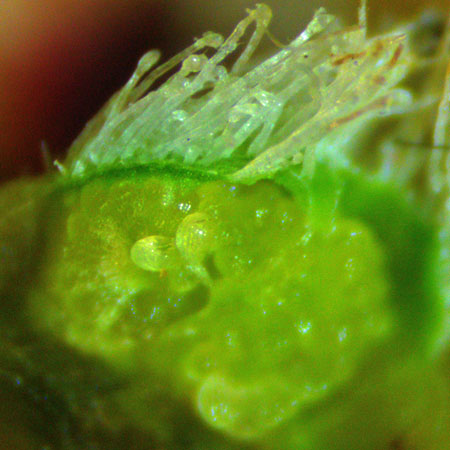
Staminate (Male) flower
Even in a staminate flower, the non-functioning pistil is still prominent! The ovary still has ovules in it. The style is long and as long as the stamens. The stigma still has lobes on it. However, the stigma does not mature further with enlarging and spreading of the lobes and consequently, the pistil is non-functioning. The anthers produce copious amounts of pollen.
Shown is an older open flower exposing the stigma and the anthers that have already released their pollen. The small stigma lobes can be seen on close inspection.
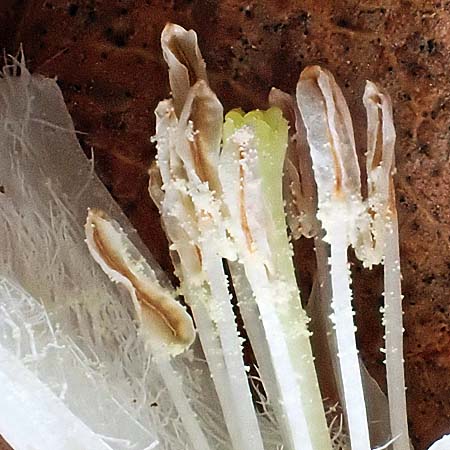
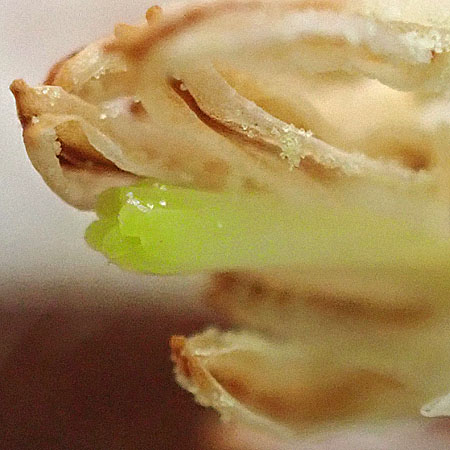
The anthers have dehisced releasing
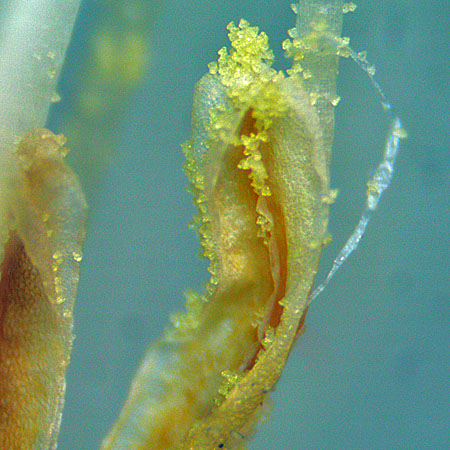
The pollen grains are retained as tetrads - groups of 4.
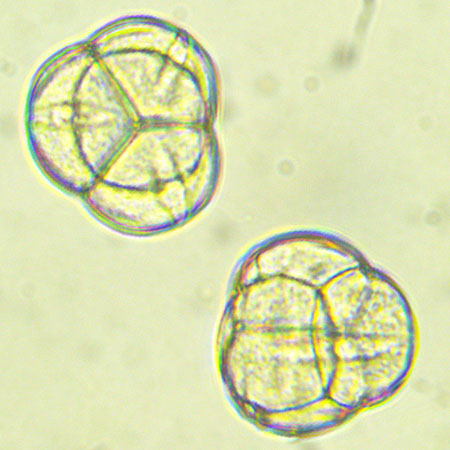
Fruit
Fruit
The fruit is 5 lobed from the 5 carpels and about 1/4 inch wide. The trailing arbutus seeds are dispersed by ants - myrmecochory. Unlike bloodroot seeds and spring beauty seeds which have elaiosomes to attract and reward the ants, trailing arbutus does not have elaiosomes. Instead, the trailing arbutus seeds are embedded in a white tissue that is sweet and jelly like. The ants will carry away some of this tissue with the seeds.
We do not have photos of the fruit yet. However, here are two links to very nice photos on the internet.
photo of fruit showing seeds, showing 5 lobes in the fruit
photo of fruit showing seeds, showing an opened younger fruit
Leaves
The trailing arbutus leathery evergreen leaves are simple and alternate and up to a few inches long. The ovate/elliptic leaves have a rounded or cordate base. The leaves are hairy, at the margins, less on the upper surface and more on the lower surface. The petioles (leaf stalks) are hairy too. The hairs are brown. The leaves over winter and new leaves are produced after flowering.


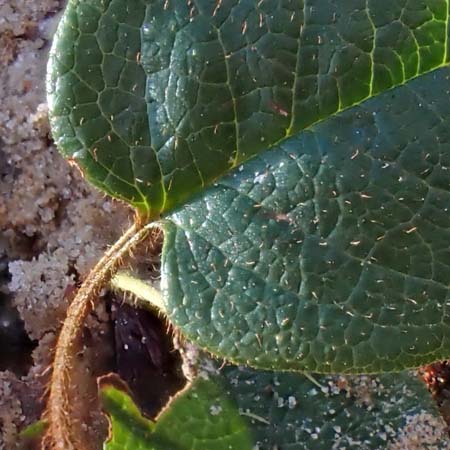
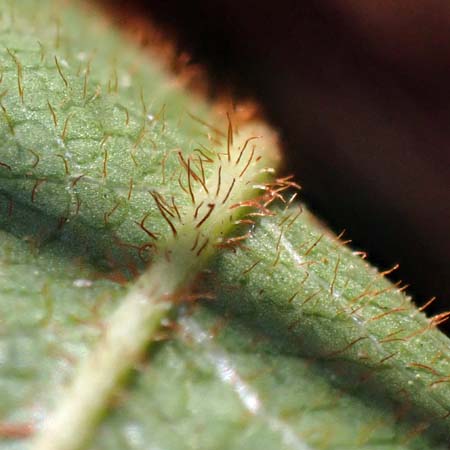
Plant & Habitat
The trailing arbutus stems branch and spread out horizontally on the ground and are hairy. Trailing arbutus spreads asexually by rhizomes.
The plant grows in the woods where the leaf litter is light. It frequently can be found on slopes where some of the leaf litter slid down.
In NJ, trailing arbutus is S4 - Apparently Secure. In iNaturalist, in NJ, trailing arbutus was found mainly in the northern counties (2024).

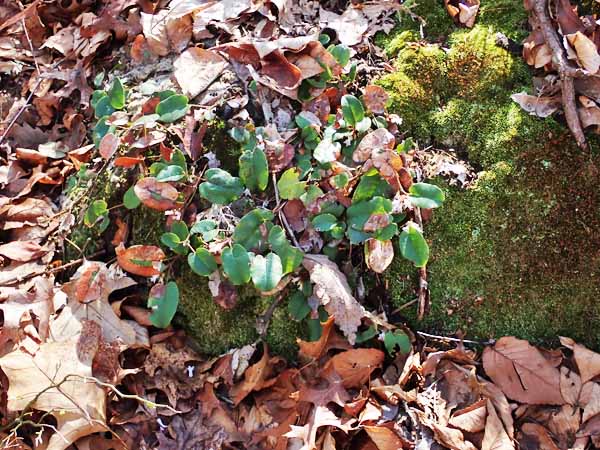
Text by Millie Ling and all photos by Hubert & Millie Ling. Photos: Jamesburg Conservation Area, Deleware Water Gap. Photos mainly taken 4/6 and 4/15 2024.
Additional information / References
Additional information / references:
- The USDA website shows Trailing arbutus- Epigaea repens distribution in the US and other information: https://plants.usda.gov/home/plantProfile?symbol=EPRE2
- Excellent discussion on reproductive system. Accessible free with an account: Stylar Polymorphism in Epigaea repens, a Dioecious Species, Clay, Keith, and N. C. Ellstrand, 1981 https://www.jstor.org/stable/2484708
- Conservation Assessment for Trailing arbutus (Epigaea repens L.) Dolan, Rebecca & Herbarium, Friesner. (2004). Click Here
- Myrmecochory in the trailing arbutus https://www.jstor.org/stable/2996337